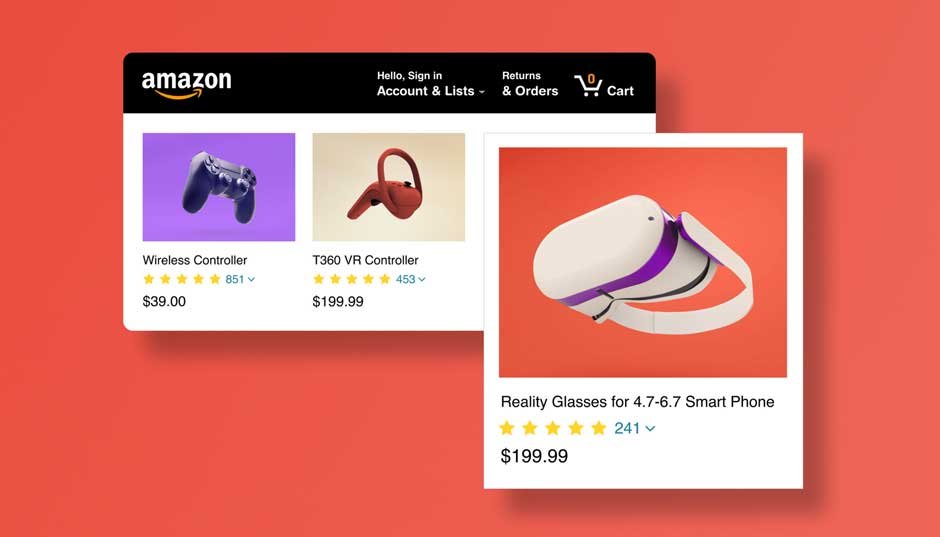Chapter 1: Understanding Amazon and Focusing on Your Business Area
Selling on Amazon can be a profitable venture, but it requires a proper understanding of the platform and its policies. Success on Amazon starts by focusing on one business area and avoiding shiny object syndrome. This means selecting a niche that you understand and are passionate about and sticking with it to build a strong presence and reputation within that market.
It’s important to set realistic goals and understand the Amazon experience. With over 300 million active users worldwide, Amazon is a highly competitive platform. Your focus should be on differentiating your products and service to stand out from the crowd. The most effective way to do this is by providing quality products, excellent customer service, and an easy and hassle-free buying experience for customers.
One of the key ways to succeed on Amazon is by taking advantage of the fulfillment by Amazon (FBA) program. FBA allows sellers to store their products in Amazon’s warehouses where Amazon will handle the packaging, shipping, and customer service. This not only saves time and money for the seller but also leads to higher rankings on the Amazon platform, as products under FBA are more likely to receive positive reviews.
When it comes to finding products to sell on Amazon, there are two primary strategies. The first is manual search where sellers look for products by browsing the platform and identifying categories and niches with high demand but low competition. This can be time-consuming, but it allows sellers to identify unique and innovative products.
The second strategy is using software like Jungle Scout, which can help sellers discover new products, optimize listings, and save money. Jungle Scout provides a range of features including product research tools, sales analytics, and keyword tracking. The software makes it easy for sellers to identify products with high demand, low competition, and high profitability.
It’s crucial to consider search trends, seasonality, and customer demand when choosing a product to sell, especially one with less competition. Private labeling can also help build brand recognition and provide a unique selling proposition for the product.
Sourcing products from different parts of the world, like Asia or Central America, can be challenging but also offer access to lower-cost products. Alibaba is a popular platform for connecting with manufacturers and trading companies. However, testing and finding the right supplier for the product is essential for ensuring quality and reliability.
Once you’ve identified a product to sell, calculating profitability involves considering product cost, Amazon fees, and profit margins. Amazon has fees associated with selling products, including referral fees, fulfillment fees, and storage fees. It’s important to select the right selling plan on Amazon and constantly move products to avoid additional charges associated with inventory.
To increase sales on Amazon, using pay-per-click advertising (PPC) and offering promotional deals can be an effective strategy. It’s important to research competitors, understand your margins and budget, and experiment with different strategies to find the best fit for your product. Jungle Scout software and Ink File LLC can also be helpful tools for navigating the world of Amazon sales.
Good product reviews are essential for success on Amazon. Providing accurate product descriptions and images and exceeding customer expectations can help achieve this. Utilizing all caps for the main tagline and bullet points for easy readability in the description is also recommended. It’s also important to follow up with customers after the purchase to ensure satisfaction, which leads to more positive reviews and higher rankings on Amazon.
Finally, while there are many courses on how to sell on Amazon, it’s not necessary to spend money on them. Amazon offers free resources to help sellers create a successful store. These include ‘Seller Central’ account management resources, product listing guides, and tips on how to optimize listings.
To summarize, starting an Amazon store takes patience and diligence, but with the right approach, it can be successful and profitable. By understanding the platform and focusing on your business area, finding and sourcing products, calculating profitability, and implementing successful selling strategies, you can increase your chances of success on Amazon.

Chapter 2: Finding and Sourcing Products
Finding the right product to sell on Amazon is a crucial step towards success. As a seller, you want to offer products that customers want and are not readily available. One of the main strategies is to focus on a specific business area to avoid spreading yourself thin and becoming overwhelmed. By focusing on one area, it helps to establish credibility and become an expert in that area.
One way to find potential products is through a manual search by browsing through Amazon’s categories or through customer reviews to identify gaps in the market. Another option is to use software like Jungle Scout, which generates a product database, including trends, demand, and competition. It helps to identify profitable niches and specific product opportunities using big data.
When selecting a product, it’s essential to consider its cost, profitability, and the fees associated with selling on Amazon. Keep in mind that products with low competition can be profitable, but they could also signal a product with low demand or a short lifespan. According to Amazon’s guidelines, products should be compliant with their policies. It’s essential to choose a product that aligns with your brand and has good profit margins.
Private labeling is an effective way to develop a unique product and prevent direct competition with other sellers. Private label manufacturers can provide white-label products, and sellers add their brand’s logo and unique packaging. In this way, sellers can build brand recognition and control their products’ pricing and marketing.
When sourcing products, sellers must find reliable suppliers. Alibaba is a popular platform for connecting with manufacturers of goods from different parts of the world like Asia and Central America. Amazon also has partnership programs like Amazon Associates, Amazon FBA, and AWS. Testing and validating the supplier’s capabilities and inspectors are essential to ensure quality control.
Calculating profitability involves determining the cost of goods sold (COGS) divided by the sales price and subtracting the Amazon fees. The Amazon fees include Fulfillment by Amazon (FBA) fees, referral fees, and storage fees. FBA fees can range from $2.50 to $137.32 per unit, depending on the product size and weight. Referral fees range from 6% to 45% of the product’s sales price.
Sellers should consider moving products more often, reducing storage fees and long-term storage fees. Amazon updates its fees regularly, so it’s essential to stay informed and adjust pricing strategies accordingly. Jungle Scout provides historical data on fees, which helps optimize costs, improve pricing strategies, and revenue.
The quality of the product listing is the key to attract buyers and increase sales. It’s essential to provide accurate and detailed product descriptions, high-quality images, and answer customers’ questions promptly. Amazon uses A9 algorithm that weighs several factors, including sales history, product title, and the product description in determining search rankings. The main tagline should be in all caps to enhance visibility, and bullet points can be used for readability.
To increase sales, sellers can use pay-per-click advertising (PPC) and promotional deals. Before advertising, sellers must research their competitors, assess their margins and budget, and develop a persuasive marketing strategy. Offering promotions like discounts and free shipping can increase conversions.
In conclusion, finding and sourcing the right products requires thorough research, analysis, and evaluation of suppliers, trends, and competition. A successful product listing that includes a high-quality product image and accurate descriptions and optimizations, coupled with good customer service, is key to generating sales and achieving success on Amazon.

Chapter 3: Calculating Profitability and Understanding Amazon Fees
As an Amazon seller, it’s essential to understand the costs and fees associated with selling on the platform. This understanding will help you calculate your profitability and plan your pricing strategy accordingly.
Amazon charges two types of fees for the products sold on its platform: referral fees and fulfillment fees.
A referral fee is a percentage of the product’s sale price that Amazon charges as a commission. The percentage varies by category and can range from 6% to 45%. For example, if you sell a product for $100 with a referral fee of 15%, Amazon will charge you $15 as commission.
The referral fee covers the cost of promoting and marketing your products on Amazon. In return, Amazon provides a massive audience of potential customers that you might not be able to reach otherwise.
The second fee is the fulfillment fee. It’s a fee that Amazon charges you to pick, pack, and ship your products from their fulfillment centers. The cost of this fee depends on the size and weight of the product sold. It ranges from a few cents for small, lightweight products to several dollars for large, heavy products.
Keep in mind that the fees above are just a part of the equation. As an Amazon seller, you have to take other costs into account such as the cost of goods, shipping, and storage fees.
To calculate your profitability, you need to subtract your total costs from your total sales. The difference is your profit. Therefore, it’s crucial to consider all costs associated with selling your products on Amazon.
Another factor to consider is determining a profitable selling price for your product. It’s essential to price your products competitively while still maintaining a profit margin. One way to do this is by using the “Cost of Goods Sold” calculation. This calculation involves adding all costs associated with sourcing, manufacturing, and transporting the product, then dividing by the expected sale units to determine how much it costs to produce one item.
It’s also important to keep track of your inventory and avoid long-term storage fees. Amazon charges storage fees for products that don’t sell within a specified time frame. The fees vary according to the product, size, and time stored.
In conclusion, calculating profitability in an Amazon store involves understanding the fees associated with selling on the platform, including referral fees and fulfillment fees. It’s essential to take into account all costs, including product costs, shipping, marketing, and storage fees. Calculating a profitable selling price for your products is key to success on Amazon. By keeping track of your inventory and avoiding long-term storage fees, you can maximize your profitability and achieve success on the platform.
Chapter 4: Implementing Successful Selling Strategies
As an Amazon seller, it’s important to implement effective selling strategies to increase your chances of success. In this chapter, we will explore some strategies that have proven to be efficient and can help you sell on Amazon.
1. Optimize Your Product Listings
Having well-optimized product listings is essential for increasing sales on Amazon. Customers use search terms to find products, so including relevant keywords in your product titles and descriptions can improve your product’s visibility on Amazon.
When creating product listings, make sure to use high-quality images and accurate product descriptions, providing customers with all the information they need to make an informed purchase decision. Allowing customer questions and feedback can also increase your listing’s visibility.
It’s crucial to follow Amazon’s guidelines when creating product listings. Using all caps in the product title, for instance, can result in suspension of your account.
2. Focus on Customer Service
Providing excellent customer service can help you stand out from the competition and improve your reviews, leading to increased sales and higher profits. Responding quickly to customer inquiries and addressing issues efficiently and professionally can lead to positive reviews and repeat business.
It’s essential to exceed customer expectations by providing fast and reliable shipping, high-quality products, and accurate product descriptions. Offering a satisfaction guarantee can also help build trust with customers and increase sales.
3. Use Pay-per-Click Advertising (PPC)
Pay-per-click advertising is a strategy that involves paying for clicks to your product listing. This advertising tool can increase visibility for your product and attract potential buyers to your listing.
When using PPC advertising on Amazon, it’s essential to research your competitors and understand your budget and profit margins. Experimenting with different keyword combinations and targeting options can help you find the best strategy for your Amazon store.
4. Provide Promotional Deals
Providing promotional deals is a great way to attract customers to your products. Amazon’s lightning deal, deal of the day, and best deal are some of the most popular promotional deals you can use to drive sales.
When creating promotional deals, make sure to calculate your profit margins and budget. Offering too many deals or discounts can hurt your profit margins and reduce your overall revenue.
Conclusion
Having a successful Amazon store requires a combination of effective product listings, excellent customer service, and savvy marketing strategies. Implementing these selling strategies can help improve your visibility on Amazon, increase your sales, and build a profitable business. By following these tips, you can grow your business on Amazon and stand out in the competitive marketplace.
